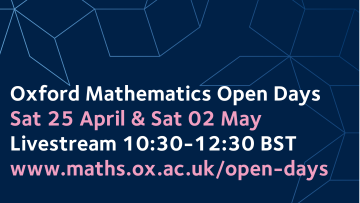The show goes on and that means the vital role of explaining what we do and what you need to do to join us as a student in Oxford Mathematics.
Our two Open Days will do just that. Admissions Guru James Munro will be live, talking about life in Oxford, explaining the Admissions process and, together with some of our students, answering any questions you want to ask. In addition there will be talks covering different aspects of the curriculum.


